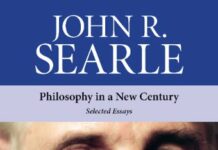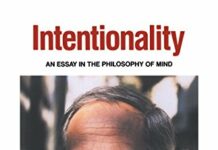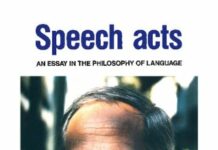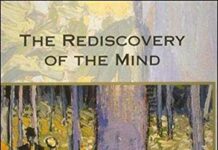
Ebook Info
- Published: 2010
- Number of pages: 258 pages
- Format: PDF
- File Size: 0.38 MB
- Authors: John R. Searle
Description
This short treatise looks at how we construct a social reality from our sense impressions; at how, for example, we construct a ‘five-pound note’ with all that implies in terms of value and social meaning, from the printed piece of paper we see and touch.In The Construction of Social Reality, eminent philosopher John Searle examines the structure of social reality (or those portions of the world that are facts only by human agreement, such as money, marriage, property, and government), and contrasts it to a brute reality that is independent of human agreement. Searle shows that brute reality provides the indisputable foundation for all social reality, and that social reality, while very real, is maintained by nothing more than custom and habit.
User’s Reviews
Reviews from Amazon users which were colected at the time this book was published on the website:
⭐In an earlier review of a later book (“Seeing Things as they Are” 2015) I said Searle’s argument for “direct realism” was a bit circular. In this earlier book, he addresses that very circularity.This book is about the physical and conceptual structure of social reality, such things as money, marriage, government, corporations, and cocktail parties. Searle points out that many animals live and cooperate in packs and so exhibit a “social reality”. All it takes to be social is for two people, or animals, to do something together. If you and I decide to go for a walk together, that, our walk, is a social fact. If we agree that a screwdriver is useful for driving screws, our agreement takes place in a social and linguistic framework in that we both know what screwdrivers and screws are for. But neither the walk, nor the screwdriver are institutional. Walking is something that humans are able to do by their physical constitution and the same goes for the screwdriver’s ability to drive screws. But other objects (coins) can also drive screws and if they can do that it is also thanks to their physical constitution.Institutions are different. Money is not valuable intrinsically because of the properties of colored paper. It is valuable because it is embedded in an institution that applies symbols to physical things (like printed money) granting them powers they do not have merely as a product of their physics. These symbolic applications can be compounded endlessly yielding more and more complex institutions into which subsequent generations are born and raised against a background of these already symbolized and so constructed social realities. Language, that which we use to assign these symbols, is itself a socially constructed phenomenon and special because it is the institution that originates in a pre-linguistic but already social (in the animal way) context. Apart from the bodies that utter them, words work because they are symbols from the beginning. Paper colored and printed in a certain way by a certain institution (a mint) is, after all, physical. The government itself rests, ultimately, on something physical, a constitution, which is recorded in one form or another. Records (whether in language on paper, pictures, bits encoded in a computer, or uniforms conveying certain assigned powers to their wearer) are often the “at bottom” physical manifestations of our symbolic institutions. Every dollar bill is a record. Here (as I suspected) Searle and M. Ferraris (“Documentality”) come together. All of these are physical RECORDS that constitute the foundations of “from that point on” persisting social institutions. We connect the raw physical thing to the constructed institution by language.If all of this seems too quick and over simplified, it is here in this review, but not in the book. Searle takes us through the argument that social institutions are, step by step, constructed by such symbolic assignments. “X has power to Y in context C” being the fundamental form of all institutional facts. This structure can be infinitely recursed. “Y’s” can become “X’s” and “C’s” can become “Y’s” generating symbolic constructs (social facts) recursively and Searle takes us through numerous examples demonstrating how it is that our complex social reality can be generated from the same structure which, when fully unpacked, and except for language, always finds its bottom in some physical X. Thus society grows out of the physical foundations of the world and is continuous with it.In the book’s last three chapters, Searle connects all of this to the ontological reality of the physical world and our shared experience. Physical reality must exist in order that any statements about it are intelligible, and specific forms of physical reality (like Mt. Everest or the screwdriver) must exist and be shareable, part of our “public reality”, or we could not be sure, when we communicate (a social phenomenon) that our meanings are ever understood. If I say “the cat is on the mat” we take for granted that we know what we mean by ‘cat’, ‘mat’, and ‘on’, not to mention an enormous background of experience in physical and social reality such that we understand and agree on a reasonable range of contexts for cats, mats, and so on. Searle essentially argues that it is our capacity to communicate and construct social realities out of physical realities, that demonstrate the independent correspondence between our epistemic categories and the external world. None of this would work if not for mind-independent things structured much as (if not always exactly) we take them to be. Our capacity to communicate rests on the correspondence between language-reflected concept and mind-independent fact.I would give this book six stars if I could. Searle is exceptionally good at getting at what he means in plain English. Anglo-analytic philosophy at its best, and about a meaningful subject!
⭐This book is another one of Searle’s rigorous and complex effort at philosophizing, and yet one of his most readable. I think we are indebted to his research assistant for the clarity of locution and punctuation — two areas where Searle can be vulnerable. This book also uses many concepts discussed at length in two of his other books: “Speech Acts” and “Intentionality.” Having read these two other books, while definitely helpful, is not necessary, as Searle is kind enough to describe his meanings and references as he goes along. And he goes along at quite a rapid clip. This is, moreover, one of those books one cannot afford to skip a sentence without serious impairment of further understanding.With these caveats in mind, I highly recommend this tour of Searle’s defense of naive realism in modern analytic terms. He is highly analytic, and builds quite a fortress that he is pained to defend against criticisms of circularity. Nowhere is this charge more appropriate than in his defense of language as simultaneously being an “institutional” and “brute” fact. Each reader will have to decide whether or not he succeeds, but, if he has failed, it is not for a lack of effort.Of all Searle’s books, this is the one I enjoyed the most. Searle is an excellent analytic philosopher, but a grammarian he’s not. His lack of grammatical discipline usually interferes with his philosophizing and frequently plagues his other works, but is completely remedied in this book. It’s not an “elegant” work, by any means, but it is clear, concise, and comprehensible. His arguments are thoroughly explained, developed, and explored, so that even a novice could follow his impeccable logic. And, there are an abundance of arguments, new linguistic devices, and formulations and reformulation of his ideas to sustain his central motif: Objective reality is objectively real.This is a great display of analytic thoroughness, coupled with a generous amplification of his ideas. A truly “fun” read.
⭐This title is a knockoff of Berger and Luckmann’s famous book, The Social Construction of Reality, published decades earlier (1966), and Searle has the same purpose: to produce a theory of how the social world is constructed, or rather to extend his philosophy of objective knowledge to include social objects. There is, however, no citation of Berger and Luckmann’s work. Is that because he failed to research the topic he was writing on, or is he deliberately avoiding calling attention to a constructionist view that covers the same topic and provides a more elegant explanation?Searle’s effort to ground social phenomena in an objective reality appears misguided in the extreme for those who recognize that all knowledge of an objective reality is itself a product, rather than a cause, of the cognitive and social processes of knowledge-building. Berger & Luckmann start with the cognitive and social processes of knowledge-building which leads them to an elegant theory that accounts both for social constructions and scientific knowledge of an “objective”, i.e. intersubjective, reality. In contrast, Searle’s efforts seem hacked, predicated on flawed assumptions, mystifying and, having conflated knowledge of an objective reality with the objective reality itself, to reversal the causal ordering of things.
⭐Put simply, this book analyzes how human society functions and it does a really good job. It is philosophy put to work in normal life. If you want to know how complex this society we live in can be read this book.
⭐I remember several times going “I never thought about that”. And Searle has a very approachable language that is suitable even for people without a strong philosophy background.
⭐An interesting and heartfelt book, but it ignores the previous work with nearly the same title by Berger & Luckmann; The Social Construction of Reality!
⭐John Searle is famous for his creation of the Chinese Room argument. I read about this argument in books by Hofstadter and Dennet, and from their demolition of the argument, I assumed that Searle must be a woolly-thinking dualist. (The Chinese Room argument describes a man in a room who answers questions put to him in Chinese by matching the symbols and using rules to output other symbols. The man does not even know that the symbols represent Chinese, and Searle says that the man does not understand Chinese. Dennet agrees that the man does not, but the room and its contents as a whole do understand Chinese.)I was wrong. Searle, is a very coherent philosopher, whose ideas make sense to a scientist/engineer like me. This book spends a chapter each, defending external reality, and the correspondence principle (the truth of a statement depends on how well it corresponds to reality). The fact that Searle has to write these chapters is an indication of how disconnected philosophers can be from reality, but the fact that he does, puts him on the side of the good guys.The main thrust of the book is to define a new sort of reality — not the reality understood by physics, but one that is socially created though none the less real. Searle’s main example is money. It does not involve skyhooks in the Dennet sense of extra-physical mumbo jumbo, but money cannot be reduced to physical reality either — it only has value because society collectively deems that it should.In this book, Searle describes and helps to define a very significant third way, between the reductionism of a physical-only approach to reality, and the anti-scientific skyhooks of religious fundamentalism and social science. I wish he’d taken God as an example to put alongside money and baseball, but I guess he’d have alienated pretty much all of his readers by doing so.
⭐Reality is composed of brute facts and things that we believe to be true. Examples of brute facts can be things like the Himalayas – things that exist outside our head. Things we believe to be true are things like money or institutions like the Bank of England. If people vanished tomorrow, then the Himalayas would still exist. Not so money or the Bank of England. Does that mean that money and banks are ‘social constructs’ and hence unreal?No, says Searle. Social reality is real. Money and banks are real because people think they are but this is not to say that these things are real on account of some collective mental conjuring trick. They have hooks in brutal physical facts. Hence money is a social concept of exchange but we ascribe this significance to physical things, like pound notes and dollar bills (even when we transact online, we are thinking that what we transact are not electronic impulses but physical money, represented in electronic form). What is a dollar bill? Is it just a piece of paper? Yes, it is a piece of paper but it is not ‘just’ a piece of paper. It represents a bill of exchange and I can buy things with it. But this is real because we confer by collective agreement that certain pieces of paper are money and other pieces of paper are just that – paper. When we say that something (a pledge, money etc.) is not worth the paper it is written on, then we have withdrawn this all important consent. That is what happened to money in Germany in during the country’s hyperinflation. It just became piles of worthless paper.Similar observations could be made in relation to institutions, like the police. We accept that some people have certain powers on the basis of agreed definitions of the content of that power and when it is legitimate to hold it. Not any old person can go around arresting people. The same goes for doctors and other professions. We have laws against impersonating police and doctors for good reasons. We want to make sure that a fraud does not bypass the condition of collective intentionality to ingratiate themselves into a position they do not deserve.This is such a useful book for understanding the distinction between brute reality and social reality, without falling into the relativist trap that social realities are just phantoms. Culture and biology, like mind and body, are not separate. Social reality emerges from the physical capacity of our brains to ascribe symbolic reality to people and things. Some people are police officers and others are not. Some pieces of paper can buy things and others cannot. Our brains decide on the difference. Along the way, Searle dispatches some trivial relativism indulged in by some professional philosophers, who can prattle on the way they do because they cannot comprehend this distinction. A very useful book that advances one’s understanding of the social world we live in.
⭐Memory wanting, however, bit like Chomsky Manufacturing. Assumes direct realism, in my view, completely ignores the incredible complexities involved in the signifiers – signified relationship. Good read if you want, or, need a 21st century grasp of what we mean by a shared social reality.
⭐Well written, really tries to help the reader understand the ideas. A teacher as much as a philosopher. And is ideas are fascinating, so well worth the time.
⭐partner liked it
Keywords
Free Download The Construction of Social Reality in PDF format
The Construction of Social Reality PDF Free Download
Download The Construction of Social Reality 2010 PDF Free
The Construction of Social Reality 2010 PDF Free Download
Download The Construction of Social Reality PDF
Free Download Ebook The Construction of Social Reality




